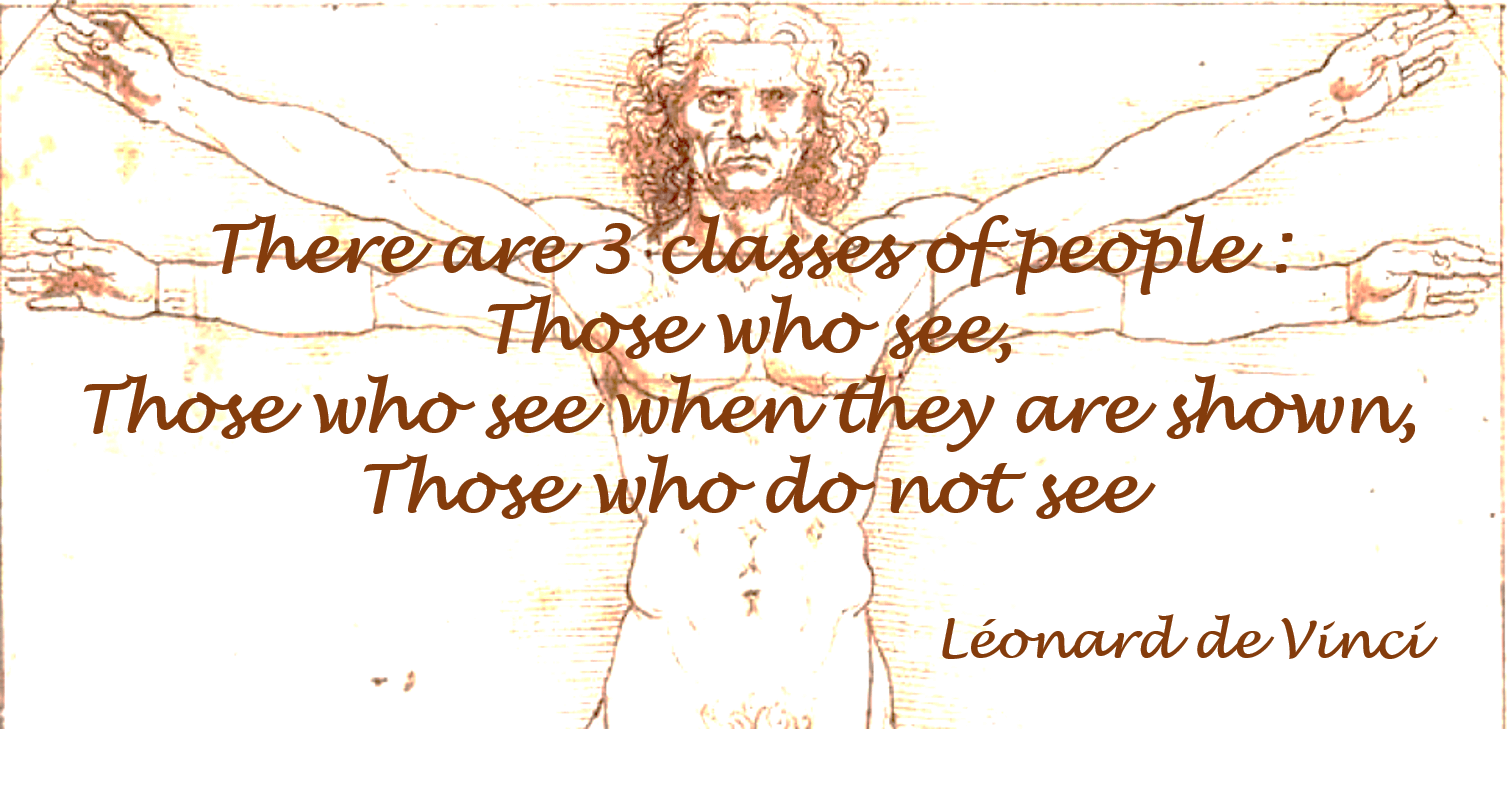- Would you be willing to pay more for a product that was transported 3km more than another in a factory?
- Would you be willing to pay more for a service because it took half an hour to find the right way to respond to your request?
NO
Whether services or manufacturing products, all activities generate waste and therefore costs that no customer would pay if he knew that this is included in the price.
 The goal is to go hunting to waste in order to eliminate them. This hunt will be for example during 5 G :
The goal is to go hunting to waste in order to eliminate them. This hunt will be for example during 5 G :
- Gemba : The place where the work is carried out and where value is created
- Gembutsu : The process or object to be observed, the data and indices to collect
- Genjitsu : The reality, the objective fact, the search for causes
- Genri : The theory, as provided procedures
- Gensoku : Operational standards
This could also be done at a more focused session “hunting” according to the following approach :
- Prepare the session
- Define the team
- Inform staff
- Set the investigation zone
- Locate and identify waste
- Compared to 7 + 2 wate
- By measuring the impact
- Rank waste
- In ascending order of importance
- Eliminate waste
- Develop an action plan
But, more generally, the waste hunting must be an ongoing activity. We must get used to uncover waste and seek to eradicate.
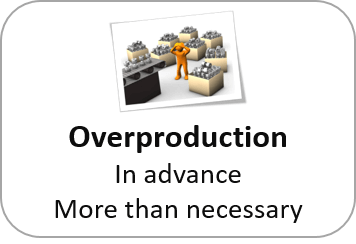 This is the worst waste because it generates all the others. It’s to produce more or in advance with respect to what is necessary.
This is the worst waste because it generates all the others. It’s to produce more or in advance with respect to what is necessary.
- Do not stop when the next station no longer follows.
- Supplying a large amount because it is more economical.
- Duplicate data entry.
How to reduce this waste?
- Replace systematically into question the idea that larger amount productions or supplies are to save money.
- As for inventories, set minimum and maximum levels and accept that people stop when they reach the maximum.
- Make information available to people.
- Be based on Takt Time.
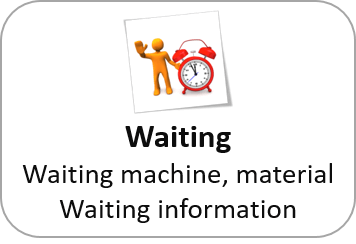 These are all situations where someone or something is waiting. It is a waste because the wait causes the non-use of a resource (area, machine, man). This applies to all the company’s services.
These are all situations where someone or something is waiting. It is a waste because the wait causes the non-use of a resource (area, machine, man). This applies to all the company’s services.
- Expect a decision (result of control, assigning a production …)
- Expect the raw materials for his workstation.
- Waiting for a machine (setting size, no driver, no components, …)
How to reduce this waste?
- Question the principle that it is the people who should never end up waiting. In many cases, it is better that it is a machine that does not wait, especially when it is a bottleneck.
- Organizing the flow so that everything is available when it is useful.
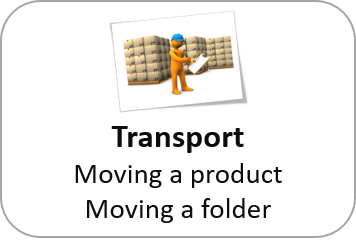 These are all movements of goods or folders, regardless of reason. This applies to all the company’s services. Any transport does not provide added value.
These are all movements of goods or folders, regardless of reason. This applies to all the company’s services. Any transport does not provide added value.
- Moving a folder or a pallet to the next station.
- Put a work in process pallet in the store instead of the hand to the next step.
- Deliver an order complement.
How to reduce this waste?
- Position the storage areas closer to the workstations.
- Reconcile positions of each other.
- Transfer the relevant information only.
 These are all products or services in process (raw material or customer demand, work in process and finished goods or finished folders to be transmitted). The presence of inventory is a sign of non process control. It is also a major cost in square meters, handling and management. Finally, it is often an asset of cash which the company would do well to spend.
These are all products or services in process (raw material or customer demand, work in process and finished goods or finished folders to be transmitted). The presence of inventory is a sign of non process control. It is also a major cost in square meters, handling and management. Finally, it is often an asset of cash which the company would do well to spend.
- Machine A is faster than machine B. So there’s work in process between A and B.
- If I don’t allow myself to make inventory, I have nothing more to do…
- I stack folders because the check is done once a week.
How to reduce this waste?
- Reducing setting time (SMED method for example).
- Define levels of minimum and maximum inventories.
- Pull rather push the flow (demand downstream station triggers the production of the upstream position and never the other way).
 These are all unnecessary or poorly performed tasks. In general, it comes from poor design or unsuitable tools. These are the operations in the manufacturing process that are not required to meet the customer needs. It is not easy to identify waste. Yet they are essential because they can be expensive.
These are all unnecessary or poorly performed tasks. In general, it comes from poor design or unsuitable tools. These are the operations in the manufacturing process that are not required to meet the customer needs. It is not easy to identify waste. Yet they are essential because they can be expensive.
- Precise mm machine who makes cuts that should be accurate to 1/10 of mm (or the reverse).
- People who make checks of parts they receive from the previous steps.
- Information not available when performing the process.
How to reduce this waste?
- Conduct detailed post studies, separating the activities of providing value to customers of that which does not bring him.
- Better define what the various operations to be used in connection with the overall value provided to customers.
- Follow the developments of products and processes.
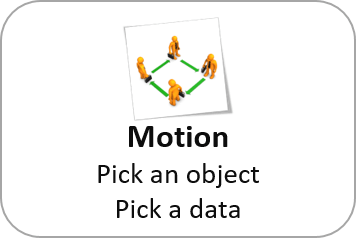 These are all movements of persons, whatever their reason. We find this waste everywhere, in every sector, every business, every activity. These movements can take place with a product or without wearing nothing.
These are all movements of persons, whatever their reason. We find this waste everywhere, in every sector, every business, every activity. These movements can take place with a product or without wearing nothing.
- Go get the key 17 required for disassembly tools.
- Go ask to the department head how many parts must be manufactured..
- Pick up at the store the necessary screws for assembly.
How to reduce this waste?
- Put what is most often used close to people (eg 5S method).
- Reduce transfers between position (practice self-control and ask the controller to carry out only checks by sampling).
- Make information available to people.
 These are all waste that can easily mark. Yet some scrap and waste seem so “normal” that they are not identified as waste. A scrap matches a job done and has not led to the desired result. It will be destroyed and remade (or adjusted and redone for services).
These are all waste that can easily mark. Yet some scrap and waste seem so “normal” that they are not identified as waste. A scrap matches a job done and has not led to the desired result. It will be destroyed and remade (or adjusted and redone for services).
- Scrap : Cut and machined component with a defect.
- Scrap : The wooden board cut to bad ratings.
- Garbage : Chips on a milling machine.
- Garbage : Scrap wood in a carpentry.
How to reduce this waste?
- Challenging every scrap : rejection criteria scrap are they suitable? Are the scrap really “normal”?
- Identify the root causes of waste and scrap and remedy.
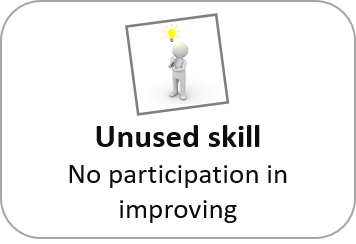 Many teams are still separated between those who think or conceive and those who realize. Experience shows that the involvement of those who carry out the design of their position generates significant waste disposal. Field observations are very instructive. Go without so wasteful.
Many teams are still separated between those who think or conceive and those who realize. Experience shows that the involvement of those who carry out the design of their position generates significant waste disposal. Field observations are very instructive. Go without so wasteful.
- Do not listen to the operator who complains about the noise of the machine that can not stop.
- Prefer to have malfunctions and corrections after a relocation rather than having to ask advice to operators.
- Never seek the advice of operators.
How to reduce this waste?
- The habit of fully inform operators of what one plans to do and involve them in the project from the start.
- Learning to lead groups of continuous improvement.
- Lead by teaching others how to solve problems rather than treating yourself.
 Nobody can work optimally if its environment and working conditions are not completely secure. When tasks are poorly designed, there are risks of tiredness, stress, accidents, but also environmental pollution.
Nobody can work optimally if its environment and working conditions are not completely secure. When tasks are poorly designed, there are risks of tiredness, stress, accidents, but also environmental pollution.
- Workstation leading to an awkward postures.
- Complex and repetitive tasks that the agent has little control. These tasks thus generate stress and tiredness.
- Risk of productconfusion resulting risk of pollution.
How to reduce this waste?
- Avoid putting people in the same position all day (do rotations).
- Involve all individuals with improvement actions.
- Achieve genuine occupational risk assessment.
Weight waste
In a statement of waste , they must be:
- Rank in class
- Ranked at criticality
- 0 = No problem – 5 = Important problem
- Rated at frequency
- 0 = Never – 5 = Very common
Eliminate waste
Waste have been identified, classified. We must now eliminate and eradicate.
For this, well inform individuals of what was found and measured. Develop and implement an action plan with them. And if a solution does not work perfectly, do not hesitate to change in small steps until the waste is removed.
Conclusions
The waste hunting must become a habit. When you travel in workshop or in services, during your daily work, you must get used to search for waste in order to eliminate them.


